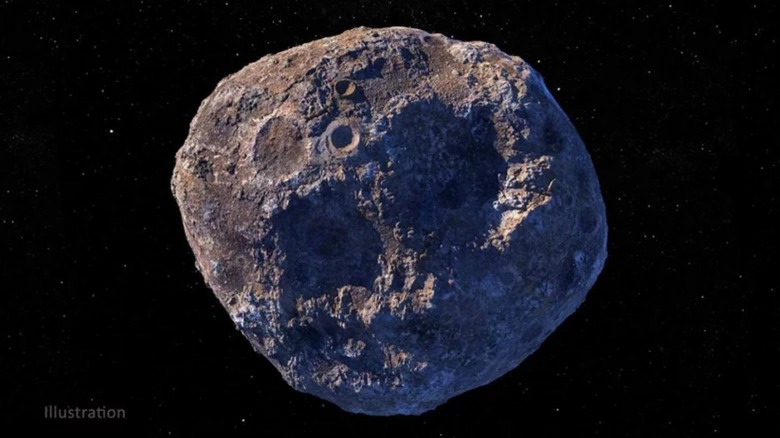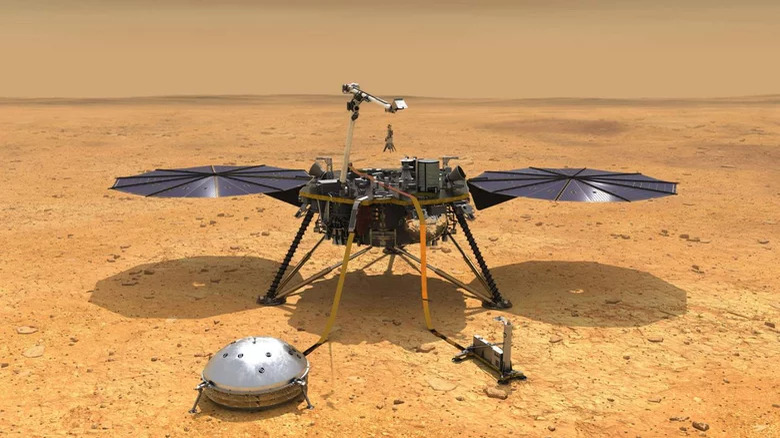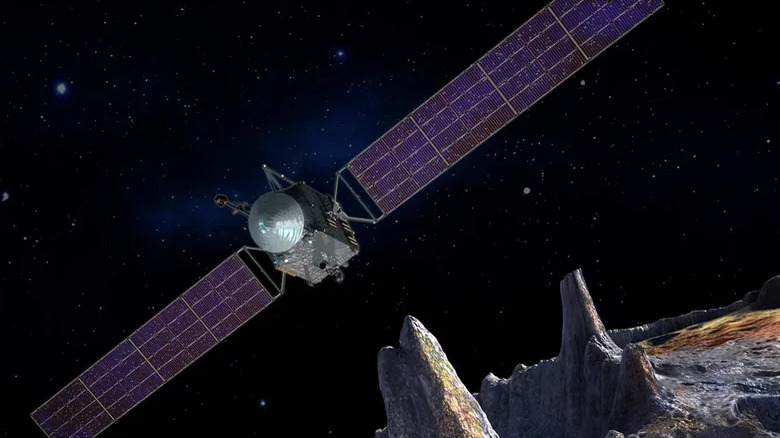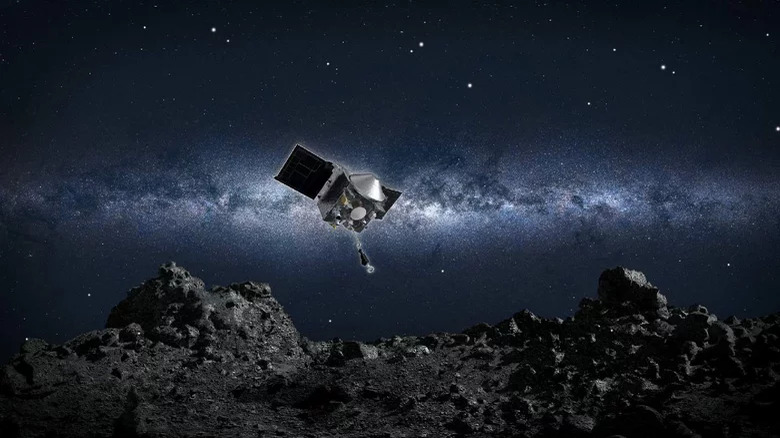What Would Really Happen If We Mined A $27 Quintillion Asteroid?
You might have seen headlines about how NASA is planning to visit an asteroid worth quintillions of dollars, and even some suggesting that mining this asteroid would make everyone on Earth indescribably rich. Most of these articles are based on a study from last year (via the Planetary Science Journal) about asteroid Psyche, a weird and wild metal asteroid which NASA is planning to visit with a mission launching next year (via NASA).
The study found that Psyche, which is 140 miles across, is almost entirely composed of iron and nickel, which would be very valuable if it was here on Earth. That figure has been used to extrapolate a worth of quintillions of dollars, or even more than the Earth's entire economy.
And Psyche isn't the only asteroid which has potential mining value. The website Asterank shows ranking of potentially valuable asteroids, topped off in terms of worth by asteroid Davida.
So what's the reality? Is asteroid mining going to make us all millionaires?
The costs of mining an asteroid
The first issue to think about is how much it would cost to access an asteroid's resources. Even asteroids which pass relatively close to Earth are still further away than the moon, and we haven't started mining the moon for resources yet. Asteroids are also generally moving extremely fast, at speeds measured in kilometers per second, so they're not exactly easy to latch onto.
And then there's the question of how you would actually go about mining an asteroid. Presumably, we'd have to use automated robotic mining equipment, as it would be even more difficult and dangerous to send humans there to do the job. But as incredible as robots like NASA's Mars explorers are, they still aren't very good at dealing with unexpected circumstances – like the InSight lander on Mars, which was scuppered in its attempts to drill into the planet's surface because the firmness of the soil was slightly different than expected.
To even begin to design mining equipment, we'd need to know a lot more about the asteroid we wanted to mine: what it's composed of, what its surface is made of, and how easy or hard it is to maneuver around that surface.
Then, once you've mined and collected all the materials from the asteroid, you also need to get them back to Earth. This is tricky, because metals take up a lot of space, so you'd need a large rocket to carry them all and you'd need plenty of fuel.
All of this is expensive, and all of the money you'd spend on mining would eat into the profits for any mission. Oh, and depending on how far away the asteroid is, it might take years for this journey to be completed as well.
Digging into asteroids
NASA/Goddard/University of Arizona
It might be difficult, but it's not impossible to mine an asteroid. Recently, NASA's OSIRIS-REx mission succeeded in an incredible feat: touching on asteroid Bennu and collecting a small sample from its surface. According to NASA, the mission succeeded in collecting at least 2 ounces (60 grams) of material from the asteroid, and the spacecraft is now on its way back to Earth so scientists can study the sample in more depth.
This was an extremely challenging mission though, with problems ranging from the surface of the asteroid being different than expected to the lid of the sample collection container not closing completely. It took years of planning to execute, and the total time from launch to landing back on Earth is expected to be seven years. All of this for a few ounces of rock.
Another mission which has succeeded in sampling an asteroid is the Japanese Space Agency (JAXA)'s Hayabusa2. Following on from Hayabusa – which returned less than a gram of material in 2010 – Hayabusa2 took a tiny chunk from the asteroid Ryugu in 2018 and returned it to Earth in 2020. There's even incredible video footage showing the Hayabusa2 spacecraft touching down on the asteroid's surface and nabbing its cargo.
https://www.youtube.com/watch?v=agnSwV451_4
The point of these missions was to gain scientific knowledge (as asteroids can hold vital clues to understanding the early solar system), not to make money from mining. But they do demonstrate that it's possible to collect resources from asteroids – though it certainly isn't easy.
So what would actually happen if we did mine an asteroid?
The biggest issue with mining asteroids for profit, however, isn't necessarily about the practical difficulties. It won't be straightforward, but as technology develops and we get better at sending out autonomous space missions, eventually it will be possible to mine asteroids.
The big problem is about supply and demand. Materials like gold are valuable largely because they are rare. There are practical uses for gold, certainly, but its value comes primarily from the fact that there isn't much of it around. Even if we found an asteroid bursting with gold and other valuable resources, bringing it back to Earth would make little economic sense.
That's because having a huge influx of resources suddenly available would make the price of those resources drop dramatically. If we found enough gold, say, for everyone on Earth to have a big chunk of it, then suddenly gold wouldn't be worth very much any more. Having all of that supply available would effectively wipe out its value.
That's not to say there's no potential value in mining asteroids. There could be particular resources available which are valuable not only because of their rarity but also because we use them in manufacturing, for example. It could make economic sense to mine those if they are available elsewhere in the solar system.
Before we can do that, though, we'll need to develop space mining technology further. And arguably the best place to practice that would be on the moon, which also holds potentially valuable resources but which is rather easier to access than an asteroid. NASA has expressed interest in moon mining technology, like its Break the Lunar Ice challenge which invited companies to submit their ideas for mining ice on the moon (via NASA).
And in a blog post, former NASA administrator Jim Bridenstine wrote that the U.S. government wanted "to encourage international support for the public and private recovery and use of resources in outer space" and that the agency wanted to work with private companies to develop technologies for moon mining, with the aim to use similar techniques on Mars as well.
So don't expect asteroid mining to make everyone on Earth a millionaire any time soon – or ever. But, eventually, we may well find a way to make use of space resources – even if they are located millions of miles away.



